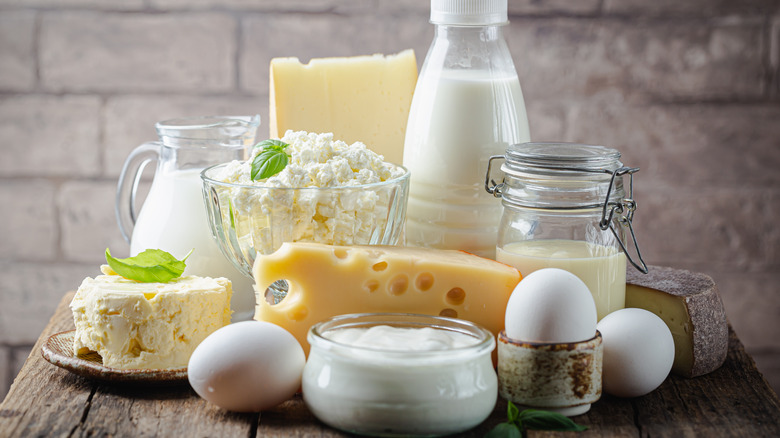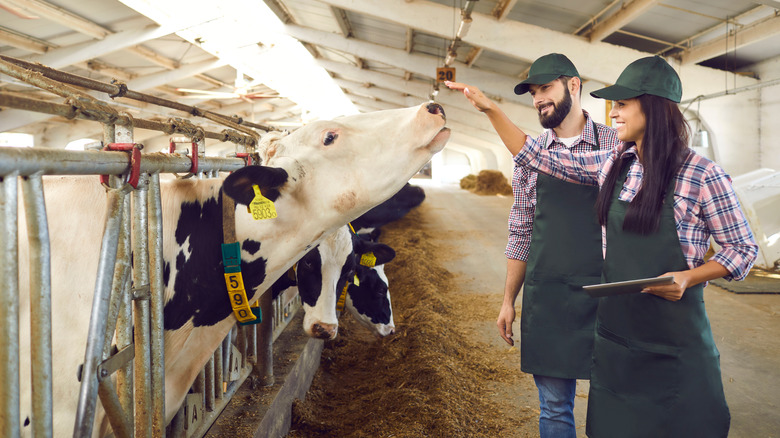How Dairy Farmers Are Making Milk And Cheese More Sustainable
Sustainability has become a priority for brands around the globe, especially for those that understand the value of creating a positive social and environmental impact. Meanwhile, consumers are becoming more selective of the companies they support — intentionally buying from those that are ethical and transparent about their business practices. These facts hold true across a variety of markets, from retail to technology to transportation. But one industry that just so happens to be dominating the eco-friendly game is food and beverage. According to a 2020 study conducted by Edelman and The Nature Conservancy, 55% of food, beverage, and agriculture business leaders are upping the ante when it comes to enforcing new sustainability practices.
Among the food companies saving the environment (or trying to) are those in the dairy space. A number of dairy farmers are reducing their carbon footprint by recycling natural resources, such as air and water, and reusing manure to eliminate the need for artificial fertilizers, per Dairy Discovery Zone. So, why is all of this important, and how is it ultimately affecting the milk and cheese we eat? When people are fully aware of the ways in which their favorite products are made, it not only improves their perception of the brands they shop for, but it may encourage them to buy more.
Dairy farms are investing in energy-efficient tools and methods
With the sheer amount of cheese, butter, ice cream, milk, and yogurt Americans eat — a whopping 655 pounds per person per year — you can bet that many people are paying close attention to these products' origins. Jay Waldvogel, senior vice president of strategy and global development for Dairy Farmers of America, has stressed the importance of having an honest dialogue about sustainability with customers, who increasingly care about where their food comes from (via Hoard's Dairyman).
In Wisconsin, the epicenter of dairy production in the U.S., many of the state's more than 7,000 dairy farms are using innovative ways to bring cheese into the world. Crave Brothers Farmstead Cheese, a family-owned dairy farm in Waterloo, prides itself on its modern, sustainable manufacturing methods for its award-winning mascarpone, mozzarella, cheddar, and more. The cheesemaking facility is powered by a computer-run anaerobic methane digestion system — which means microorganisms disintegrate organic waste to create methane, carbon dioxide, and other gasses and use them as renewable energy. This unique structure can help Crave Brothers make cheese in just six hours — and generate enough electricity to supply the entire farm, plus 300 nearby homes, per Dairy Foods.
In similar sustainable dairy news, renewable energy company Vanguard Renewables recently teamed up with the Dairy Farmers of America, Starbucks, and Unilever to launch the Farm Powered Strategic Alliance. This helps dairy farms invest in regenerative agriculture, meaning it gives them resources and equipment to reduce their output of waste and emissions, instead putting these elements back into the soil to be used again.

